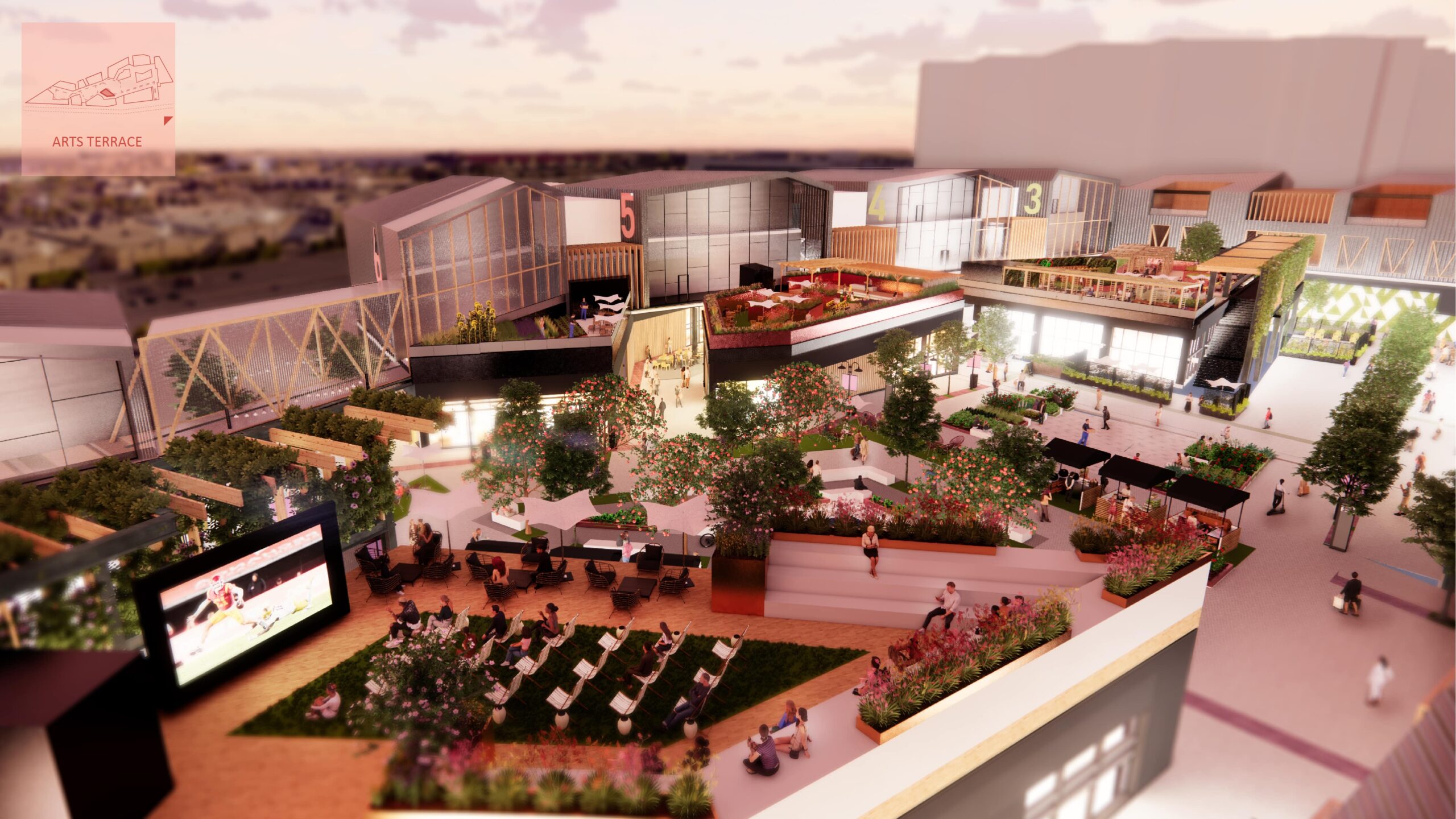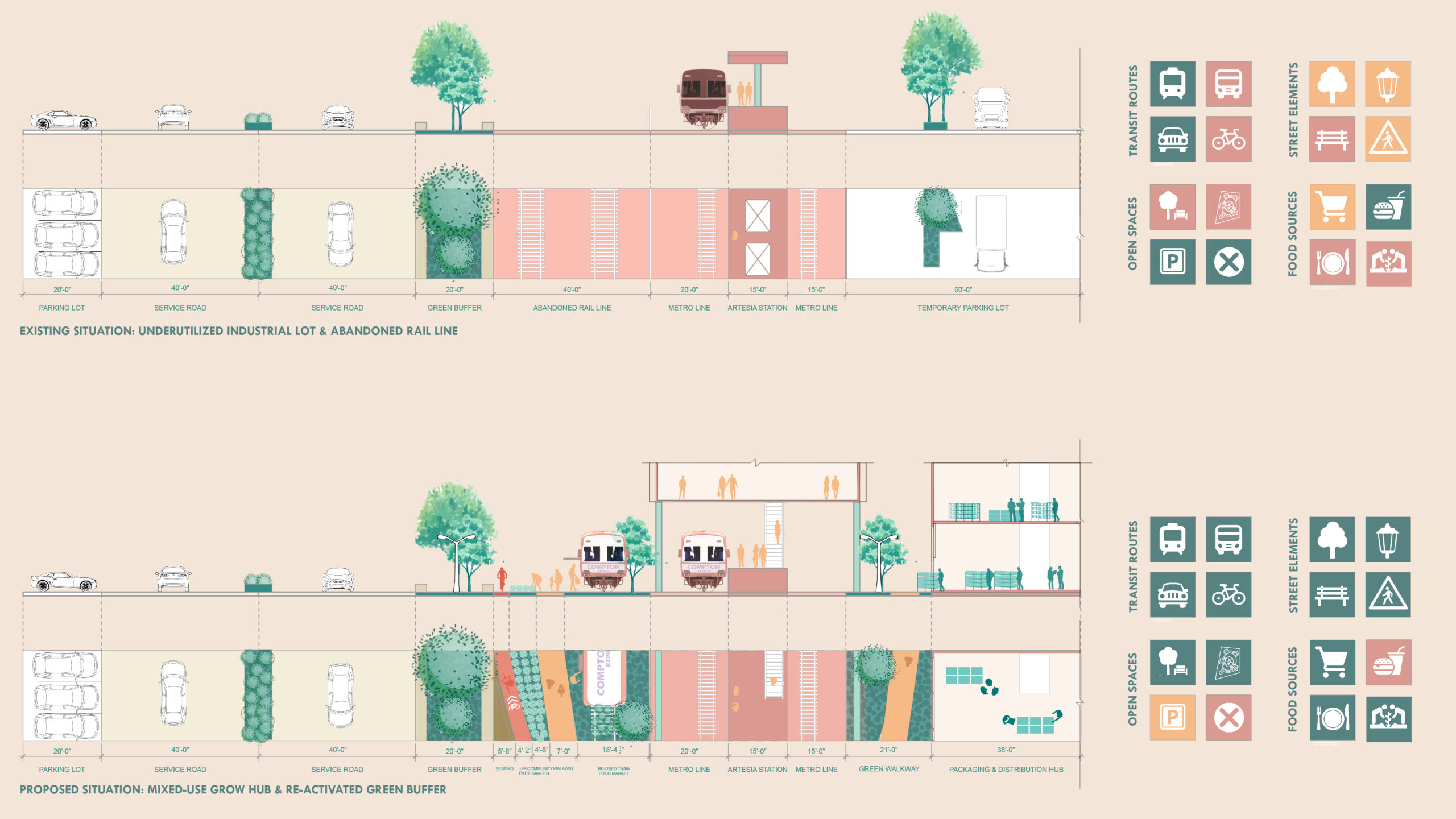


Brianna Ward, Fernanda Amezquita Palacios, Tishya Rao
University of Southern California University of Southern California
Instructor / Advisor: Kevin Sherrod
While California produces over one-third of all vegetables and three-quarters of all fruits and nuts for the United States, several of the state’s cities continue to face food insecurity and high obesity rates. One such city is Compton, where food insecurity extends beyond physical access, with poor quality and limited diversity of produce being the primary issue in the city. The Money train explores a new innovative rail-to-table model based on using existing rail line infrastructure, specifically Los Angeles Metro’s Blue Line, to package and deliver fresh produce to Compton and other communities along the route. Artesia Train Station, selected for its proximity to industrial underutilised lots and the i91 freeway for intercity travel, is attached to a 65,000 sq.ft hydroponics growing facility which doubles as a culture, health and retail hub, in an effort to celebrate the city’s ongoing efforts in combating food insecurity while providing new work opportunities and social spaces, and supporting Compton’s growing arts and activism communities. At its core, this project endeavours to address complex, contemporary challenges and reconnect communities that have been historically fragmented and upended as a result of transit-oriented segregationist policies and practices.
The Money Train
While California produces over one-third of all vegetables and three-quarters of all fruits and nuts for the United States, several of the state’s cities continue to face food insecurity and high obesity rates. One such city is Compton, where food insecurity extends beyond physical access, with poor quality and limited diversity of produce being the primary issue in the city. Despite 67% of residents living within a half mile to one of Compton’s 60 grocery stores, more than half sell damaged or spoiled goods. Therefore, there is a significant need to bridge the gap between the spatial distribution and frequent provision of fresh food for Compton and the region.

The Money train explores a new innovative rail-to-table model based on using existing rail line infrastructure, specifically Los Angeles Metro’s Blue Line, to package and deliver fresh produce to Compton and other communities along the route. The blue line was selected for its proximity to industrial areas and warehouses as well as K12 schools and community colleges, which creates accessible vocational training opportunities. The rail line is also attached to a hydroponic growing facility, which doubles as a mixed-use cultural, health and retail hub to celebrate the city’s ongoing efforts in combating food insecurity, while providing new work opportunities and social spaces for Compton’s growing arts and activism communities.
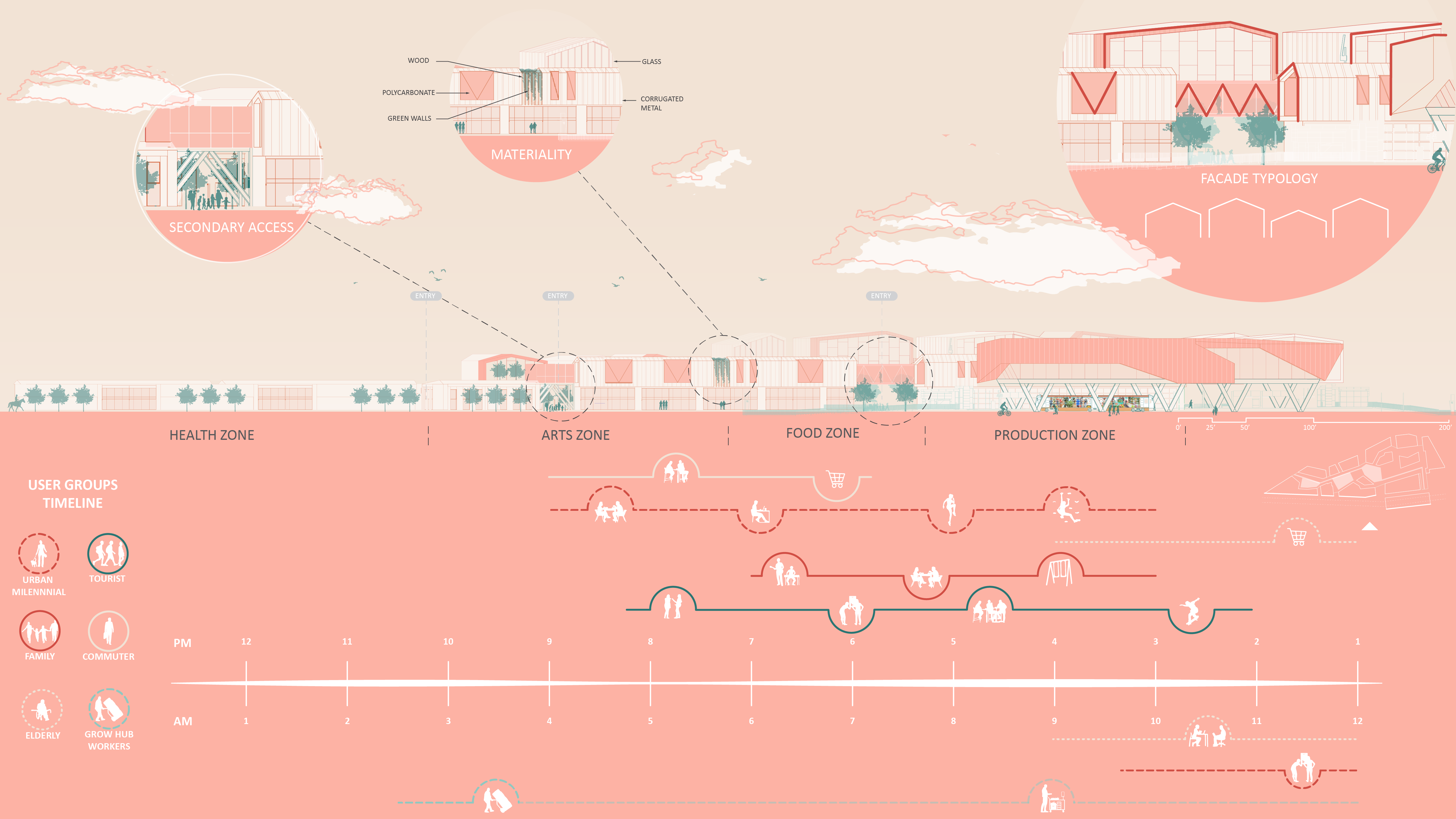
Site Selection
The project is situated at Artesia Station, within one of Compton’s industrial zones. The station was selected for its proximity to large, underutilised lots and to the I91 freeway to accommodate specific spatial requirements for a grow hub facility and for regional food distribution by road. With Compton Station just one stop prior, a localised food distribution network is established that allows for time-sensitive deliveries to adjacent local grocery stores and guarantees fresh produce on a weekly basis.
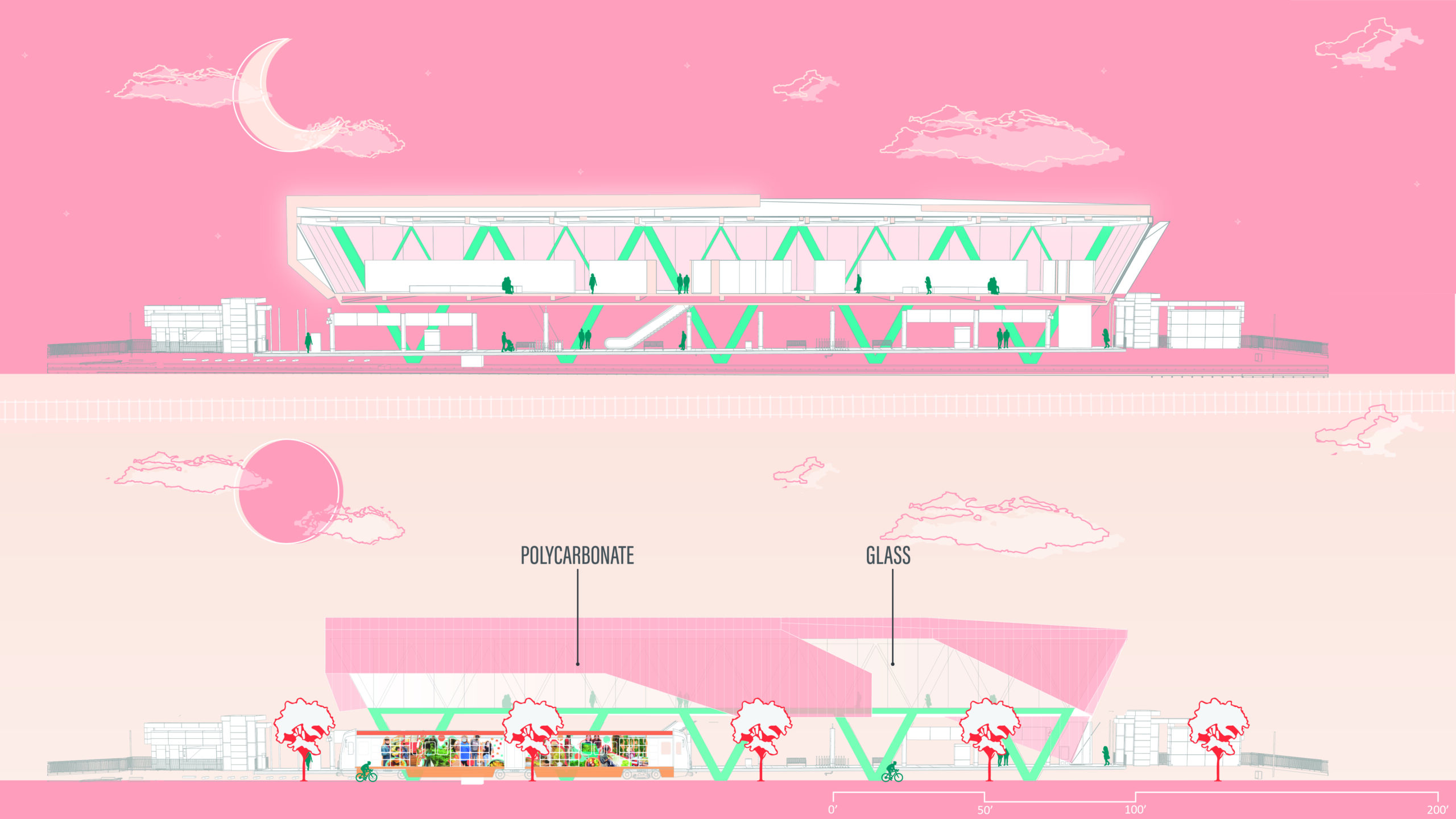
Part I: Food Transportation
The Train Station is designed to highlight its dual functionality as a public transit node and a food distribution hub. The station platform located on the first level provides easy access for passengers to catch their train during commuting hours in the day. At night, it allows for efficient on-ground food transportation from the grow hub at Artesia Station and for intra-city delivery at Compton Station. The second floor is suspended above with the support of a steel truss system and houses ticketing counters and a series of public spaces. A restaurant and café are points of sale for fresh food for daily commuters, while the exhibition space provides opportunities of exposure for Compton’s thriving artist community. The dual function of the train station as an infrastructural and public element is further highlighted through the building’s facade. Selective use of polycarbonate and glass along the suspended second floor provides strategic views into the gallery and food distribution spaces. Furthermore, the translucent façade doubles as a shading device during the day and transforms the station into a glowing beacon at night.

To supplement the station as a food distribution hub, the metro rail car has been retrofitted as a cost-effective method to reduce the local carbon footprint associated with local delivery of goods. The interior of the rail car is equipped with a floor-to-ceiling latch system to hold temperature-regulated cold storage food carts and seating areas for workers. Doors are replaced with large bi-folding glass doors to allow for efficient insertion and removal of carts within the train’s short halting time. Additionally, the exterior of the rail cart has been designed as an art mural to pay homage to Compton’s ongoing battle against food insecurity with a particular emphasis on celebrating the efforts of the local community. Titled “Compton’s Past, Present and Future”, the mural is divided into three distinct parts, with the “Past” representing poor quality of food and high obesity rates experienced by residents in Compton. The “Present” celebrates existing grassroots and city-level initiatives such as local community gardens, farmers markets, local urban agricultural businesses and training centres, while the “Future” highlights the city’s potential economic revitalization through large-scale hydroponics. The artwork was inspired by an art mural currently at Compton Station, designed by Eva Cockroft with the same name, which highlights the arrival of various ethnic groups (African American, Latino and Samoan,) that have contributed to the character of the city over time.

Part II: Food Production
400,000 square feet of underutilised parking area directly adjacent to the new Artesia Station is repurposed as a 3-storey mixed-use hydroponics facility. Based on a conversation with the Founder and Director of the Compton Arts Walk, a non-profit arts organisation, there is a significant need for open space and public amenities, particularly catering to Compton’s young families, youth, and arts community. Therefore, public programming on the ground floor is divided into 4 distinct zones – Production, Food, Arts and Health – which provides retail, services, and attractions such as restaurants, grocery stores, interactive aquaponics, performance spaces and gym and healthcare facilities to cater to different needs at different times of the day. Each zone is connected by a series of activated plazas, rooftops, and interior courtyards to provide an interactive journey for visitors across the site.
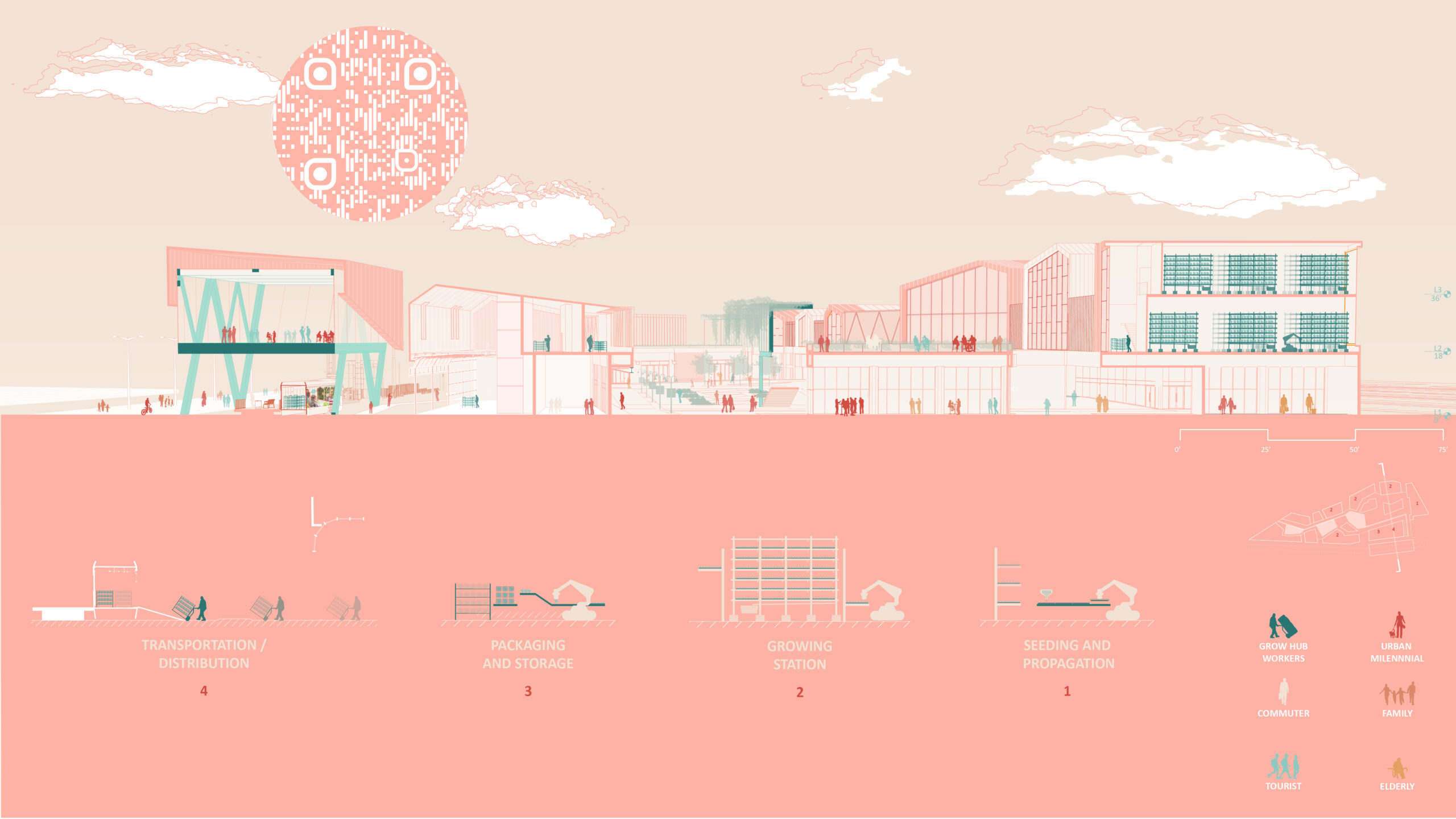
The experiential promenade on the ground floor is juxtaposed by an efficient circulation corridor held by a truss system, similar to the train station, for production workers on the second and third floor. The corridor connects 65,000 square feet of growing space for produce such as lettuce, kale, basil, cilantro and strawberries to a packaging and distribution centre located next to the station, to allow for timely movement of produce to the rail car for transportation. The low-rise domestic typology of the facility reflects Compton’s primarily residential urban fabric, while the use of corrugated metal and wood maintains the mixed-use hub’s connection to the surrounding industrial area. Strategic use of glass on the ground floor and polycarbonate on the floors above highlights the difference between publicly “visible” spaces and enclosed spaces that require specific interior lighting for seed germination and growing produce.
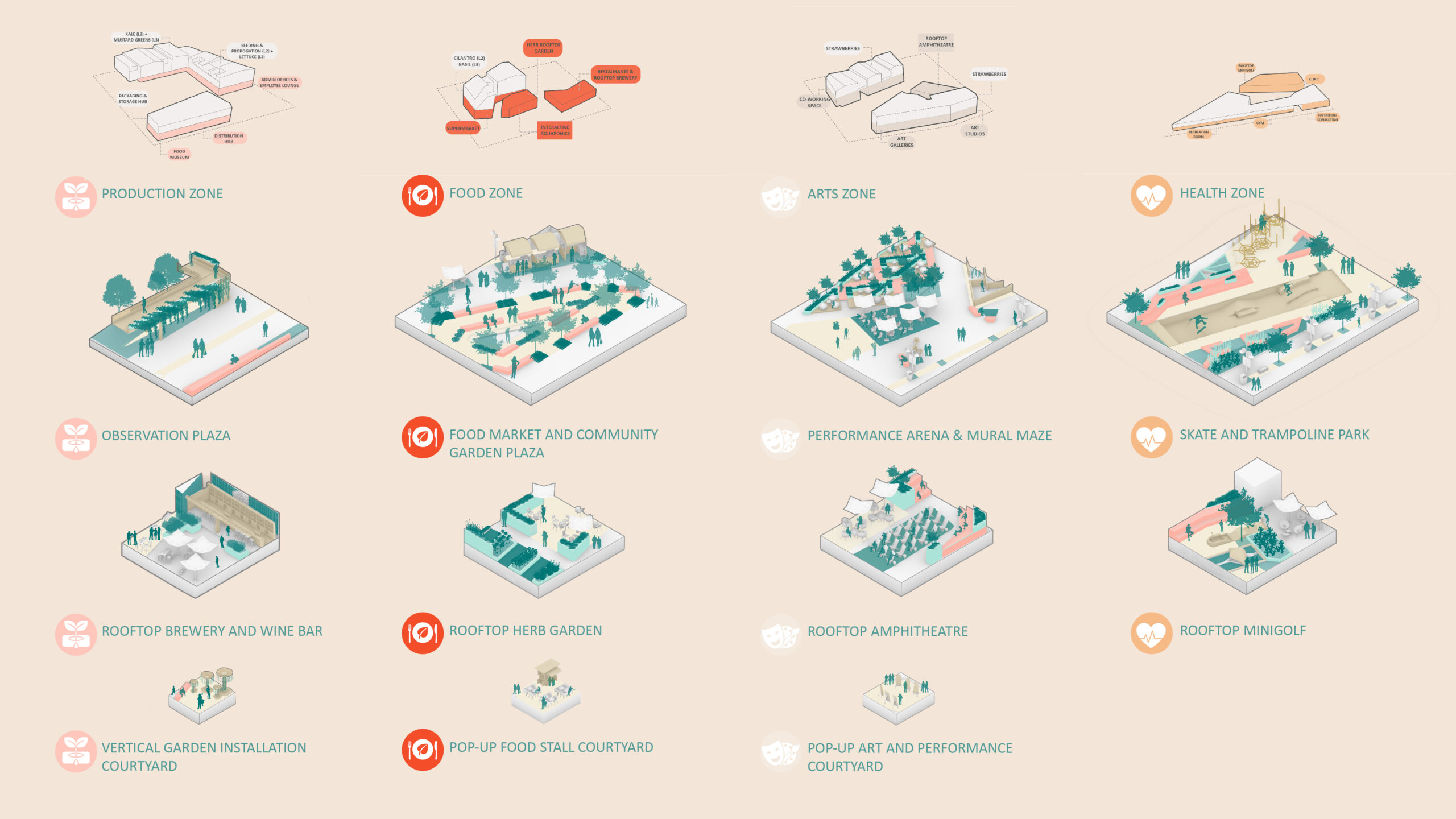
This rail-to-table model has the potential to remedy some of our most intractable issues, including climate change, environmental justice, and food insecurity. At its core, this project endeavours to address complex, contemporary challenges and reconnect communities that have been historically fragmented and upended because of transit oriented segregationist practices and reposition Compton as a leading food production centre in the country.
